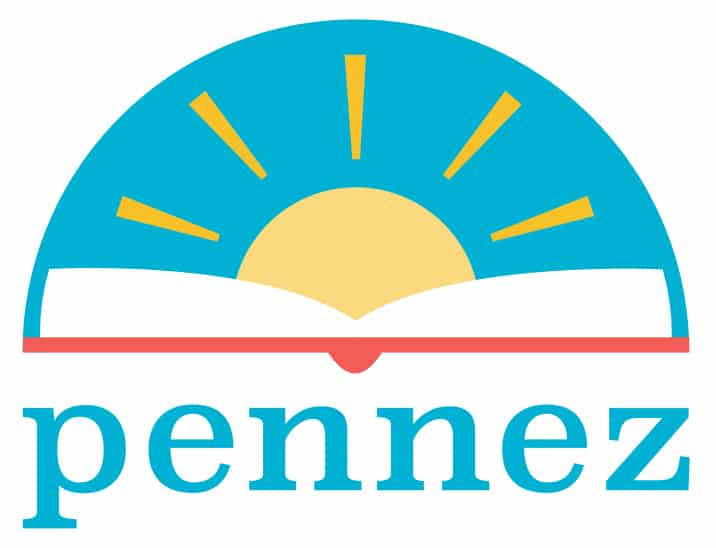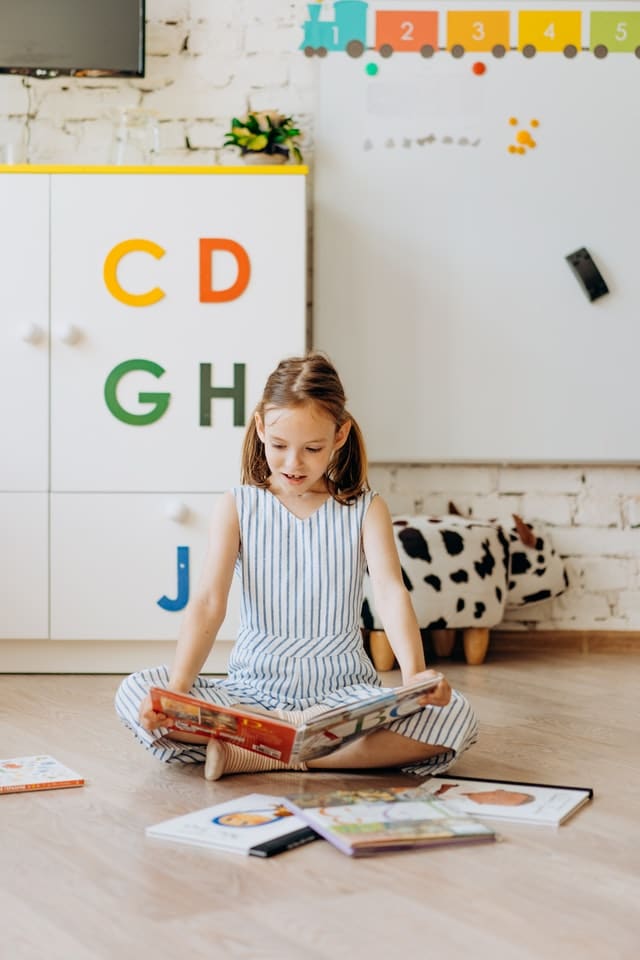Photo by Mikhail Nilov from Pexels
-
Help my child read fluently
-
Help my child read
-
Help my child read and write
Looking for ways to teach your child to read, below are 60 different tips. A list of suggestions to help your child read fluently, to encourage them to read at home. We have tips for children ages 0-16. A list of 20 tips for different ages.
AGE 0-6
- Letters-Uppercase & lowercase
Write letters each day. Have a notebook so your child can scribble or write at anytime.
Take it a step further, make an ABC book to demonstrate the use of uppercase & lowercase letters here
2. Conversation
When your child begins to speak, it is important to have fun and meaningful conversations. For example, if you are doing the dishes, count the number of forks. If you are eating dinner, ask you child to tell you about their food. Even if their words are inaudible, this engages your child with the beginning frameworks of dialogue.
3.Read Aloud Daily
You have to be intentional to read aloud. Reading aloud might seem hard, but if you have the consistent reminder: reading is for 30 minutes before bedtime, reading is 30 minutes during breakfast. This, of course will vary with your home life, but you can make this happen. Also don’t forget to ask questions from: what color is that, tell me what you see, or what happened?
4. Flashcards
There are hundreds of flashcard publishers. But use flashcards that can have the quick way of checking memory, and providing information.
5. Routines
Establishing routines with your little one for eating, potty, outside play, nap time can provide you with opportunities of reading. You can find more here.
6. Listening
If your child hears, they are building an understanding about what is heard from that spoken language. Listening guides them on learning how to talk and tell stories.
7. Magnetic letters or physical letters
Allow your baby to touch, see, and feel the letters. Even though you do not know what letters are, it can help them to feel them and provide the early development of letter and word recognition.
Pegboard Letters Here
8. Repetition
When reading, it is important to repeat important words. Repetition helps your child remember what was said, and helps them practice the sound and speech pattern. More Here
9. Make it a game
Children love having fun, and anytime that you can make reading/literacy a game you have made their day.
10. Real World
It is critical for our littles to know what the real world is. So if you are outside, at the store, point things out so they know what is around them. Describe and explain what they see, because this world could be confusing and overwhelming for some. So the more that you can take them into the real world and explain, describe what is around them will not only build their senses but vocabulary.
11. Music
You know if the right music is played, your child lights up. In this article, “Making music helps the body and mind work together, stimulates thinking and expressive skills, and enhances creativity. So with music, you are helping your child to connect their thinking and neural development. Article here
12. Rhyming
Rhyming can help a child understand phonemes and phonological awareness or word sounds. For example with rhyming a child does not realize they are saying consonant sounds, short vowel sounds, blended vowels, and more. With the repetition and flair of rhyme gives the child a foundational ability to “play” with the words.
13. Colors
Encouraging the learning of colors and art can reinforce the vocabulary. For example, when you read a book encourage a child to tell you the color or you can tell him/her the color. When you ask them to point out the animal or person on the page.
14. Sight Words
Sight words are words that we hear all of the time. Words such as a, and, must, and more.
15. ABCs
No matter what language you speak, learning the ABCs and their sounds is a step.
- You can find an activity here
16. Alphabet Sentences
When your reader is ready, they can read sentences that are in alphabetical order.
- Activity here.
17. Matching/Sorting
Matching and sorting is a known skill to improve your child’s thinking skills. When you read, you can find words, images, and new ideas from the readings. More information here
- Activity here
18. Learn Names
A way to get a child ready for writing is to learn how to write their name.
- Dot Sticker-First Name Activity here
19. Learn Home Address
Teaching your child their own address or even phone number is an easy way to teach them about capitals, commas, and numbers.
20. Encourage Creativity
Anytime during readings, encourage your child to draw or illustrate their thinking. You can encourage singing, rhyming, or acting out!
AGE 7-12
At this age, your reader is learning how to read. They will also have numerous opportunities to measure their understanding as well.
- Learn storytelling or spoken word
The spoken word is a creative activity. Through the spoken form, one can learn the story structure (beginning, middle, and end). The different ways of personification, and shifting the tone in one’s voice. No matter how sophisticated you get, speaking the story aloud builds comprehension and vocabulary. Click Here to read more.
2. Spelling
Spelling acknowledges if your reader can write a word ini the correct order. A good speller indicates their ability to breakdown the word and knows the different sounds. There are different ways for spelling: (a) different lists given each week/month. (b) words pulled from the books they read. (c) lists of words that interest them.
3. Spelling Games
There are hundreds of free and purchasable spelling games. Here is a sample product. Here
3.Writing
For writing you can have a variety of skills such as: responding to the reading, persuasive writing, creative writing, poetry, and many more. With writing, you are providing the specifics on the different methods to write.
4.Journaling
Journaling can be a free flowing of writing or a usage of prompts. The difference of journaling is allowing the reader to get their thoughts out without judgement. Example here from a homeschooling mom.
5. Encourage art
At this stage, readers need content that is visual so they can have deeper concepts of the vocabulary and readings. I always encourage readers to have a pencil, notepad, and colored pencils. This could help them on remembering to sketch what they see.
6. Prefixes, Suffixes, Affixes
Prefixes and suffixes are highly useful to learn.
- For example the word help is a verb.
- Help +er(suffix) now is helper.
- Helper is now a noun meaning a person who helps.
Learning a prefix/suffix each week can give your reader the tools to understand the different words.
7. Listening Comprehension
Listening is a challenge, but asking a reader to listen and understand is even more difficult. Ultimately, practicing listening comprehension in your conversations or if listening to a program you can ask questions. Learn More Here
8. Act out
As your reader advances, allowing movement addresses their different learning styles. You can go as big as creating a play, or as low as asking them to express the character’s emotions in their face. However, these unique moments will be memorable for your reader.
9. Reading Comprehension
Reading to build understanding will be a continuous skill they will need in their lives. With the rise of social media, they will need to learn those skills to find information and make clear decisions.
- One way to start is by asking your reader to describe what happened.
- For fiction one would describe-the characters, setting, actions of the character, main events/plot, if there was a twist, and conclusion.
- For non fiction-one would explain the categories, main idea and details, what would happen next, and many others..
- Describing: Activity Here
10. Read Science & math
Practical application, vocabulary
11. Phonics
Do not be afraid to reteach/introduce phonics. Reading is developmental and ensure they have the foundation of knowing their phonemes, vowel sounds, consonant sounds, word blends, graphemes, and each of them.
12. Vocabulary
With vocabulary, one should focus on learning the word meaning.
13. Games
At this age, you can use digital games or the good old-fashioned board games. When you are using a game, then you can integrate the usage of words or comprehension about readings.
14. Academic/Leisure Reading
As a parent, you have so much hope for your child. You also realize that your child has their own personality, likes, and dislikes. So at this age, encourage reading for fun and reading for academics. Click Here to learn more.
15. Book Club
Encouraging the aspect of book club can encourage your reader to keep up with the readings that is assigned for the book club.
16. Library
The library is always a useful place with resources and information. If you do not check out books often, then talk to your librarian about resources and databases that can be helpful.
17. Read as a family
Reading as a family has huge benefits of being able to engage and discuss what you all are reading. You can read at different times during the week that best suits you, and even create a group book text chat.
18. Stay Positive
Readers will not have the best days, because they are still learning how to read. Find the bright spots in their success and keep encouraging them if they lose confidence at anytime.
19. Syllabication
Syllabication is summarized here and the importance.
“When students are faced with reading multisyllable words, it is extremely helpful that they are familiar with the different syllable types or patterns. They will then have strategies to divide such a word into its syllables, and from there to blend the syllables so they can pronounce the whole word. Being able to spot the common spelling patterns or syllable types will aid them in the division. Instead of guessing, they will be able to attack long words and read them accurately and fluently. Entire article here
20. Have a book budget
If you have the means, consider having a budget to purchase books for your home library. At home libraries give readers immediate access to stories.
Age 12-16
Helping an Older Child with Reading Problems
You can find the full article here
1. Focus on a Reading Skill
In the 21st century, learning has taken a new approach. Learning is less about the retention of large amounts of facts and datasets. Learning is about manipulating and utilizing those data sets. As you encourage your child to read they can focus on skills such as vocabulary skills, comprehension skills, fluency skills, phonics skills, and writing skills. Each skill has a unique pathway and keeping this in place. Learning is also about collaboration, and communication to solve future problems in the world they will live in.
2. Recognize their developmental stage
Children go through a variety of developmental stages.
An example about an eleven to fourteen-year-old,
What I’m Like: I’m more independent than I used to be, but I’m quite self-conscious. I think more like an adult, but there’s no simple answer. I like to talk about issues in the adult world. I like to think for myself, and though I often feel confused, my opinions are important to me, and I want others to respect them. I seem to be moving away from my family. Friends are more important than ever. To have them like me, I sometimes act in ways that adults disapprove of. But I still need reasonable rules set by adults. However, I’m more understanding and cooperative. I want nothing to do with babysitters—in fact, if I’m mature enough I can often be by myself or watch others.” You can find more about their Stages Description Here.
When your child hits the preteen stage, then their ideas of realism are stronger than before. The best way to make their experiences, “REAL.” Is by identifying the core reasons why your reader does not read.
3. Magazines
Read teen or child magazines-talk about key points
4. Book series/Booklists
Read a series of books that is their interests.
If the booklist is realistic with topics on space, history, technology, and etc. Extend that experience to take them to the place, write to the author or an expert, or a virtual visit.
Kwame Membalia has a book series about Tristan Strong
Christine Taylor-Butler has a book series called The Lost Tribes
Renee Watson has books for Middle Grade readers
- Learn a Real World Skill
Find books where your reader can learn a new skill. Ask them something they would like to do in a set of months. If determined these could be books on sewing, coding, sign language, and this way you could see how they are implementing this vocation and reading.
6. Create digital content about readings
Make a blog, podcast, or private channel in TikTok or YouTube
7. Make it social
If you start a reading club with the adolescent’s friends, then ask them to decide: what they will read, how often they will read, and etc. Allowing readers to “own” the responsibility.
8. Encourage What they like
1:1 if your reader “HATES” reading, I always encourage parents for every 1 book that YOU like, you will read an ACADEMIC text that is required by your school. Starting off will be painful, but it can work.
9. Let them choose
As a teen/preteen they want to make decisions. So think about giving reading what they want and reading what they should.
10. Design something
Have the child to read aloud complex directions such as what an architect, building developer, and etc read. Have them illustrate those items over the course of weeks.
11. Meet with their Teacher
Beyond the conferences, gain a general understanding about their strengths and weaknesses.
12. Syllabication
Reinforcing syllables can assist your reader on decoding, and spelling.
- More information Here
13. Prefixes, Suffixes, Affixes
Prefixes, suffixes, and affixes change the meaning and spelling of a word. For example READ is the root word, READER has the prefix -er. Which now makes the word read a noun instead of a verb. So learning the prefixes, suffixes, and affixes can
14. Vocabulary
As your reader advances into reading to learn, encourage your reader to keep learning vocabulary for their own work.
15. Encourage writing
Make this real for them. Ask your reader, how they want to produce the topic. For example your reader can write to their legislators, can develop a pen pal, write a series of stories and make into a video or a web series. Writing should be a decided effort so your reader will feel that they owned the piece.
16. Grammar check
Gives rules of the language, and syntax. Consider having the reader teach you a short 5-minute lesson on the grammar.
17. Reading responses
After reading, encourage their verbal or written thoughts about the readings.
18. Build Fluency
Encourage daily read aloud. The more your reader reads aloud daily, the more he or she can build their fluency.
- Comprehension
Continue the building of comprehension. At this stage, they are reading to learn information and less on learning how to read. If your reader is still learning how to read then have patience and continue
- Problem-Based Learning Encourage your reader to read about a topic that affects their community. Then, when ready you can have your reader to an activity or project that is real or authentic.




